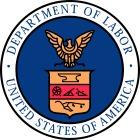As a result of the COVID-19 pandemic, many face uncertainty about their jobs and careers. The last week of March saw 6.6 million Americans applying for unemployment benefits, and many more experienced reduction in their compensation. The uncertainty could lead to more people choosing to relocate closer to family or take jobs that may require them to relocate for different economic opportunities. If you share physical custody of your children with their parent, what should you consider before making the decision to relocate?
Under Michigan law, a parent is prohibited from relocating a child, whose custody is governed by a court order, more than 100 miles from the child’s legal residence at the time of the original court order. As a result, parents who share custody of their child and want to relocate will need court permission. MCL 722.31. The court analyzes a parent’s request to move with a child in four steps. The first is to determine whether the relocating parent can support the move of the child by analyzing the following factors:
- Whether the legal residence change has the capacity to improve the quality of life for both the child and the relocating parent.
- The degree to which each parent has complied with and utilized his or her time under a court order governing parenting time with the child and whether the parent’s plan to change the child’s legal residence is inspired by that parent’s desire to defeat or frustrate the parenting time schedule.
- The degree to which the court is satisfied that, if the court permits the legal residence change, it is possible to order a modification of the parenting time schedule and other arrangements governing the child’s schedule in a manner that can provide an adequate basis for preserving and fostering the parental relationship between the child and each parent, as well as whether each parent is likely to comply with the modification.
- The extent to which the parent opposing the legal residence change is motivated by a desire to secure a financial advantage with respect to a support obligation.
- Domestic violence, regardless of whether the violence was directed against or witnessed by the child.
MCL 722.31
What impact, if any, does the COVID-19 pandemic have on a court’s analysis of the above factors? First of all, as far as the COVID-19 pandemic relates to the potential quality of life of a particular geographic region, as more and more data becomes available regarding the outbreak, certain regions of the country that found themselves more susceptible to COVID-19 may be less likely to increase the quality of life for a parent and child. Certain geographic areas may pose more of a health risk to families until the development of a vaccine. Second, many parents, although acting reasonably and in the best interests of their child, have informally agreed to modify their parenting time due to Gov. Whitmer’s Stay Home, Stay Safe order. Although it is difficult to imagine a court would criticize a parent for putting a child’s health first, lapses in parenting time and parental absence can dramatically impact a child’s relationship with a parent, which a court may be hard pressed to ignore, despite good intentions. At the end of the day, a parent’s desire to provide more stable financial and family support during this uncertain time may not necessarily result in a court approving the move.
© 2020 Varnum LLP



